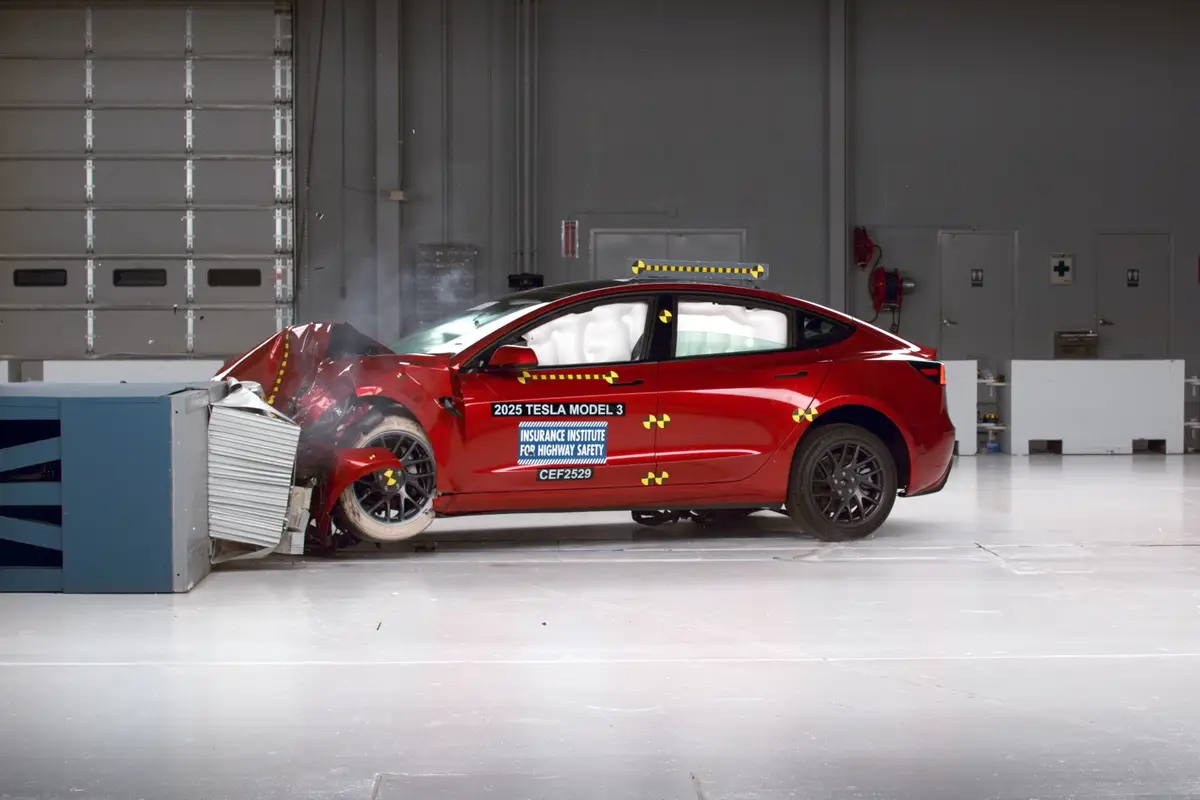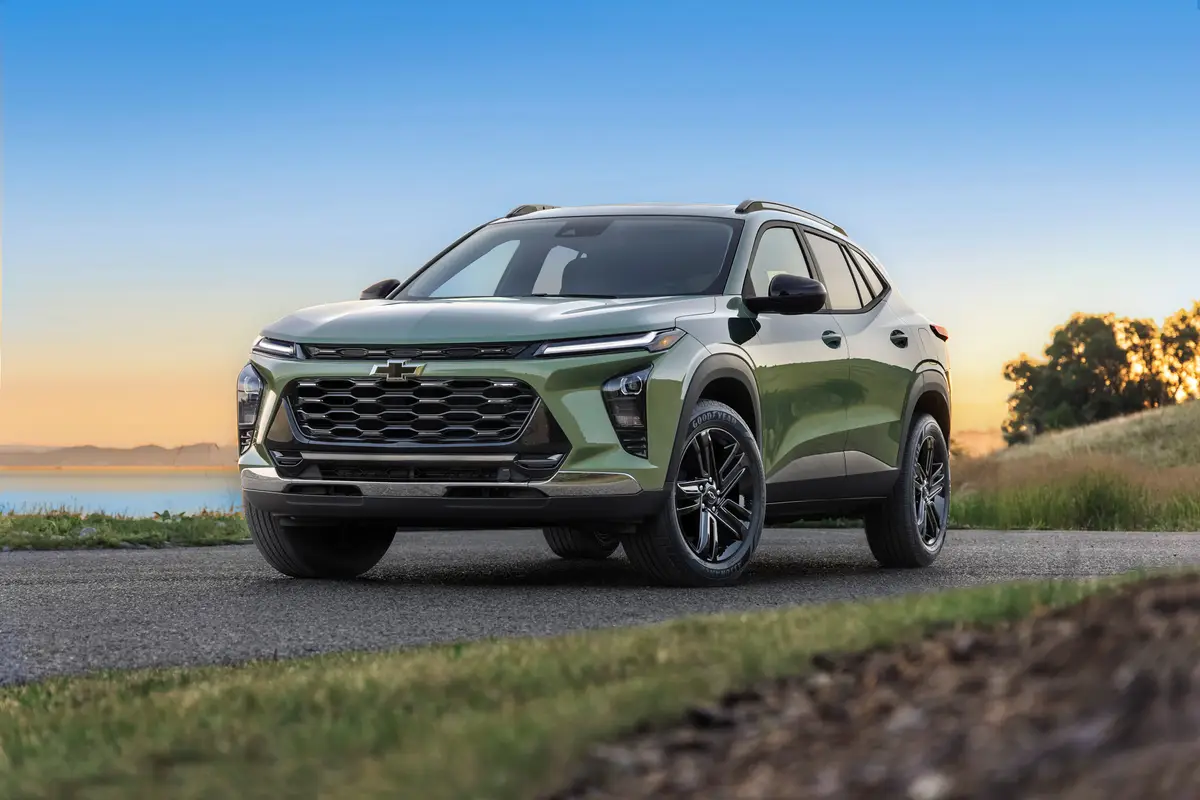Orlando Sentinel's view
Perhaps now the ghosts of Chevrolet’s small-car past – Corvair, Vega, Monza, Chevette and Citation – can be interred once and for all.
After 36 years of trying to build a first-rate small car, Chevrolet finally got it right with the Cavalier.
Toyota, known for manufacturing many of the world’s best-built cars, will for the first time put its name on a car it doesn’t manufacture. That car is the all-new Cavalier, which will be exported later this year to Japan, where it will be sold as the Toyota Cavalier.
If you ever have owned one of Chevy’s monumental duds and have sworn off small Chevrolets, you may want to put aside your fears and take a new Cavalier for a ride.
The Cavalier, now arriving in volume at Chevy dealers, has everything it needs to give the imported and domestic competition a serious run for the money. It is smooth, sturdy, quiet and well-built as well as nicely styled, handsomely equipped and loaded with safety features. And most importantly, it’s very affordable.
PERFORMANCE
The standard Cavalier coupe and sedan comes outfitted with a fuel-injected, 2.2-liter, in-line, 120-horsepower engine with four cylinders. There is, however, a more potent engine available in the Cavalier coupe and convertible.
The optional engine is an improved version of GM’s workhorse Quad 4 16-valve four-cylinder, an engine rated at 150 horsepower. It is available only in the performance-oriented Cavalier Z24. The V-6 option has been dropped for 1995.
The 2.2-liter engine in our raspberry metallic LS sedan caught me by surprise. I had tested this engine in previous years, and it never has struck me as being anything more than acceptable. It wasn’t particularly smooth, and it didn’t offer outstanding performance.
That has changed for 1995.
For one thing, Chevy’s mechanics attacked noise, vibration and harshness by designing a better intake manifold, finding a better way to mount the engine and transaxle, and designing a new air-conditioning compressor – one that runs with less vibration than the old one. Also, the new Cavalier’s body structure is much stiffer than the old car, and the stiffness helps to cancel out vibration.
These improvements have virtually eliminated the hoarse, coarse demeanor of the 2.2-liter engine. There were times that I could hardly tell it was running. The engine even runs quietly when you cruise down the highway at 65 mph.
Although the engine doesn’t deliver tire-spinning performance, it does offer plenty of pep. The Cavalier is very responsive from a stop, and it has enough muscle to keep pace with the best of the imports in its class.
Our test car came with a three-speed automatic transmission. Although four-speed automatics are in vogue now, the gearbox in the Cavalier works just fine. The shifts are smooth and timed to deliver good acceleration.
The transmission in the Cavalier is the first of a new type from GM that is des igned to be maintenance-free under normal driving conditions. It is a sealed unit that doesn’t even have a dipstick – you never have to check or change the fluid or filter.
Fuel mileage is excellent. Our test car burned the cheapest grade of unleaded fuel at the rate of 27 mpg in the city and 36 mpg on the highway.
HANDLING
The Cavalier benefits in another way from its stiffer body: The suspension system absorbs more energy from bumps in the road without causing the body to flex and twist as much as the old car. That means the Cavalier handles better while having fewer squeaks and rattles.
In addition to the pleasing performance, the Cavalier’s demeanor on the road is one of refinement and finesse.
Specifically, when it comes to cornering and braking, the Cavalier feels like a much more expensive car. The feel of the power rack-and-pinion steering is firm, tight and precise. The power-assisted brakes are superb. In fact, front disc/rear drum ant -lock brakes, standard on all Cavaliers, are among the most powerful I can recall testing lately on a small car.
I especially like the way Cavalier handles a curve. The body stays straight and the 15-inch tires ensure that the car stays firmly poised when you round a corner.
The Cavalier rolls over bumpy roads smoothly and very quietly. You can’t hear the suspension system as its various parts move up and down, and noise from the tires doesn’t find its way into the car.
I would rate the Cavalier as an equal to such notable imports as the Nissan Altima and Honda Civic. In other words, it delivers a first-class ride for the price of a coach ticket.
FIT AND FINISH
The Cavalier LS just may be the most user-friendly car that Chevy has ever built.
I felt comfortable the moment I sat behind the wheel. When you first enter the Cavalier, you get that same warm, fuzzy feeling as you do when you sit in a Toyota or a Honda for the first time.
The dash and interior are simple and honest. Every switch, button and knob is cleanly designed and placed within easy reach. And not only that, but the solid way the switches and controls click into each detent conveys quality.
The LS version comes with just about everything you could want on a small family sedan – tilt wheel, power windows, door lock and mirrors, air conditioning, a powerful AM/FM stereo cassette radio, cruise control, intermittent wipers and much more.
Cavalier features a comfortable and supportive pair of cloth-covered bucket seats. They are firm, easy to live with on long trips, and they hold passengers in place well.
This year, the Cavalier sedan offers more room for rear-seat passengers. Much of the added space can be attributed to a 3-inch stretch in the car’s wheelbase. Overall, though, the new car’s exterior length is about 2 inches shorter than last year’s model.
The top half of the rear seat folds forward and allows larger items to be stored inside the car. I squeezed in a bicycle and a disassembled grille.
When it comes to safety items, few similarly priced cars can match the Cavalier. This year, two air bags are standard. So are anti-lock brakes, side-impact protection, 5-mph bumpers and front and rear crumple zones, which absorb the impact of a crash. Also, the Cavalier’s midsection is surrounded by a steel safety cage.
There are two minor things I didn’t like about the Cavalier. The indicator lights for the automatic transmission are in the dash, not on the floor in a console near the shifter. At night the darkness near the shifter is distracting. Also, the dash seems very thinly padded. You can easily feel the hard plastic or metal underneath the thin layer of padding on the top of the dash.
That said, the analog gauges are easy to read. There is a tachometer, as well as oil-pressure and water-temperature gauge.
The Cavalier has a couple of really great features. The interior lights aut omatically come on when you take the key out of the ignition. Also, the battery will not go dead if you accidentally leave the lights on, because the car’s computer will extinguish the lights before the battery discharges.
When it comes to value for the money, the Cavalier LS sedan is at the top of a very long list. I’m convinced you can’t get this much equipment in a similar-sized import or domestic car for the same price.
The new Cavalier is so good that I think it can erase Chevy’s reputation for building dumpy, trouble-prone small cars.
Truett’s tip: The all-new Chevrolet Cavalier is a smartly designed, tightly built compact car that offers decent performance, nice handling and plenty of value for the dollar.
Latest news



